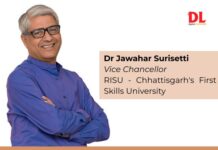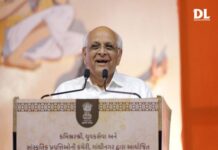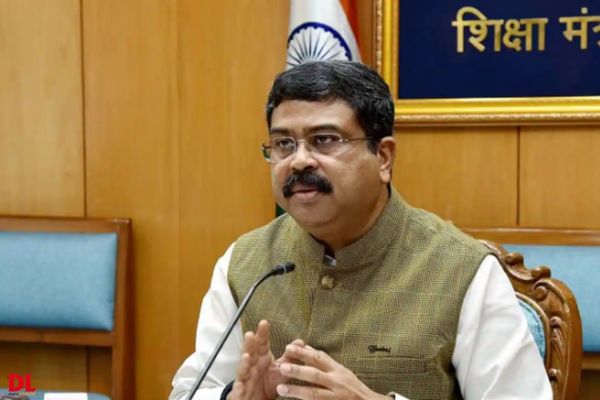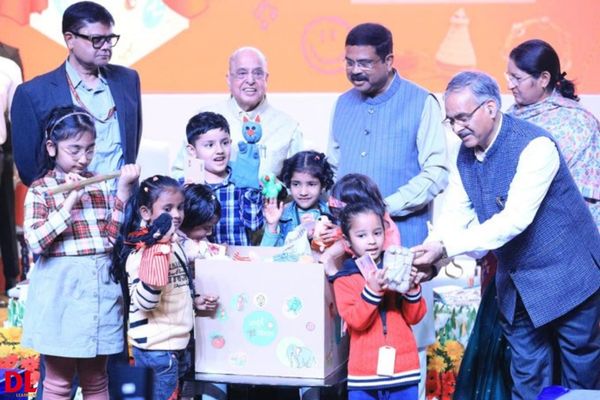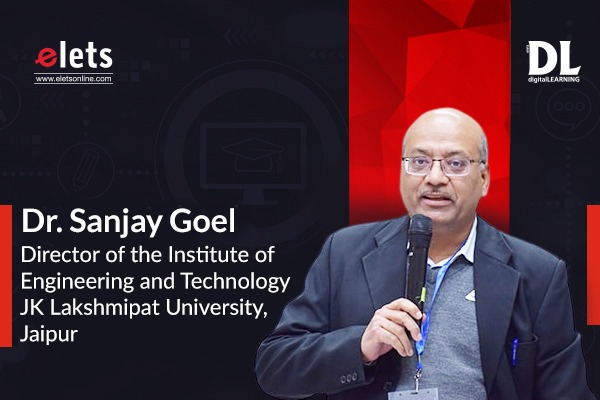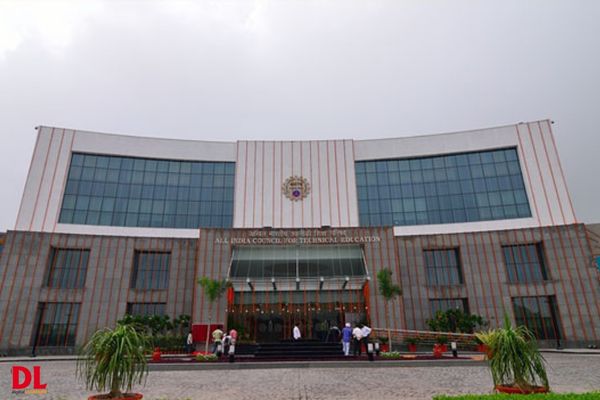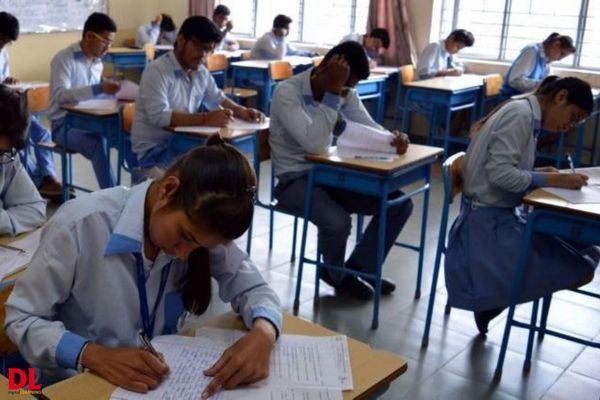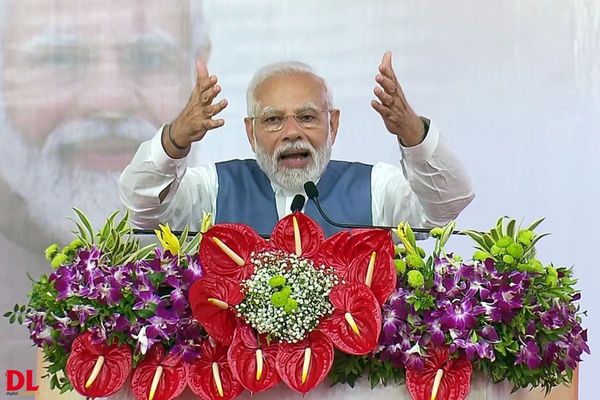The University of Virginia has inaugurated a new partnership with Jindal Global University (JGU) – one of India’s leading private universities located near New Delhi – to provide a significant new platform for student and scholar exchange, joint research on topics of global importance such as democracy and environmental sustainability, and a general expansion of UVA’s engagement in India.
UVA Provost Ian Baucom and JGU Vice Chancellor Raj Kumar signed a Memorandum of Understanding (MOU) committing to the partnership during Kumar’s visit to Charlottesville during the week of November 14 with five of JGU Deans and other senior staff. The document will serve as a foundation for more agreements between UVA and JGU schools and institutes to support student exchanges, joint research and symposia, and other collaborative activities.
Ian Baucom said that JGU emerged as an attractive partner because of our common values of public service, academic freedom, and strong interdisciplinarity in preparing our students to be productive members of society. “Jindal’s commitment to building a strong liberal arts core and focus on combining its students’ academic achievement with practical experience is particularly noteworthy and will offer our students and scholars rich opportunities,” he said.
Also read: Top 20 percentile students of each board eligible for admission to IITs and NITs
Provost Baucom mentioned that a university cannot exist or solve problems of today’s world in isolation within its own borders. “By engaging across boundaries with distinguished international partners like Jindal, we will substantially increase our success in expanding knowledge on, and devising effective solutions to, problems that have global dimensions such as climate change and effective health care,” he said.
The Founding Vice Chancellor of O.P. Jindal Global University Kumar, Prof. (Dr.) C. Raj Kumar said that the partnership will allow the students to develop a holistic understanding of the globalised world with cooperation in exchanging knowledge, perspectives, and cultural experiences. “The partnership will provide transformative prospects of higher education and learning to students in both the universities and enable our faculty members to pursue joint teaching and collaborative research with a view to advancing the cause of international education and institution building,” he said. The MOU paves the way for opportunities to promote student exchange programs as well as faculty exchange programs. It creates opportunities for dual degree programs and pathways programs in which students from both countries and both institutions are able to pursue degrees in each other’s universities. This I believe is a very important facet of the national education policy, and also the current thinking within the government when it comes to public policy in relation to higher education and internationalization. The MOU also looks at joint conferences, joint research initiatives and joint publications. It essentially enables intellectual partnership between two major institutions. The University of Virginia was established by none other than Thomas Jefferson, and we aim to draw inspiration from the world’s best universities to build capacity in India.”
Launched in 2009, JGU has swiftly developed into one of India’s consistently top-ranked institutions with 10,000 students, a highly internationalized faculty with a 1:9 ratio to students, and a substantial budget for further growth. Under the leadership of Kumar, a Rhodes Scholar and Harvard Law alumnus, the university has grown into 12 schools with faculties dedicated to law, business, liberal arts/humanities, media studies/communications, public policy, international relations, and public health/human development.
The Indian government’s new National Education Policy (NEP) promises to liberalize Indian education system removing the obstacles to international engagement, including a substantial easing of barriers to the work of international universities within India. JGU is one of 14 “institutions of eminence” that the Indian government has identified as particularly prestigious universities that enjoy special autonomy and privileges enabling them to play leading roles in shaping Indian higher education.
UVA’s Vice Provost for Global Affairs Ambassador Stephen D Mull said that the time is ripe for expanded U.S. engagement with Indian higher education, which will be vital for universities like UVA that want to have a global impact. “The country is the world’s biggest democracy with a population bigger than the U.S., Europe and Latin America combined,” he said adding that India has brilliant students, scholars and entrepreneurs who want to partner on some of the world’s biggest challenges. Since 2019, the number of new Indian graduate and professional students studying in the United States has skyrocketed by 430%, clearly indicating vast potential for higher Indian enrollments here at UVA.”
I came to work at the University of Virginia for many years serving as a US diplomat. I didn’t need any convincing about the strategic importance of India and the importance of developing a very strong relationship with India because India, from our perspective, is only going to be playing a greater role in the world. An important part of this emerging strategic relationship has to be a very close relationship. between our two academic communities. The University of Virginia is one of the oldest public universities in the United States. As Professor Kumar mentioned, it was founded by our third President Thomas Jefferson who believed it was vitally important for our democracy to succeed to have institutions like the University of Virginia to prepare citizens to fully participate in the life of democracy. That was a challenge when our University was founded in 1818. In fact, one might say, it’s an even greater challenge today. With all the considerable threats and challenges we democracies face in common or the different places around the world.”
Along with the Ambassador Stephen D. Mull, Vice Provost for Global Affairs, the academic delegation of University of Virginia includes Professor Nicole Jenkins, Dean, McIntire School of Commerce; Professor Jennifer Bair, Associate Dean for the Social Sciences, College of Arts and Sciences; Mr. Dudley Doane, Director, International Studies Office; Professor Pankaj Gupta, Director, Yamuna River Project; Ms. Judi Byers, Director of Admissions, McIntire School of Commerce; Ms. Darci Spuck, Director of Advancement, McIntire School of Commerce and Dr. Ingrid Hakala, Director, Global Internship Program.


